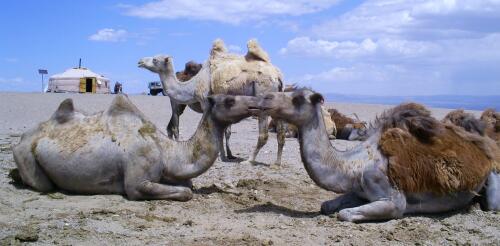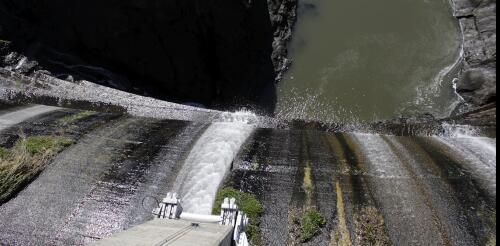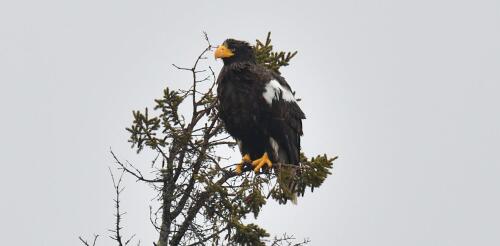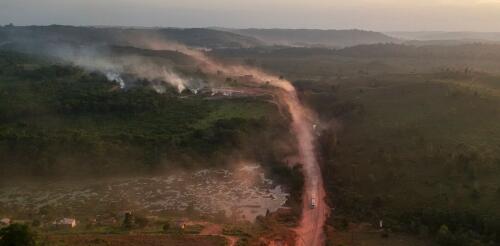Indigenous peoples
Fatal attractions are a standard movie plotline, but they also occur in nature, with much more serious consequences. As a conservation biologist, I’ve seen them play out in some of Earth’s most remote locations, from the Gobi Desert to the Himalayan Highlands. In these locales, pastoralist communities graze camels, yaks and other livestock across wide ranges of land. The problem is that often these animals’ wild relatives live nearby, and huge, testosterone-driven wild males may try to mate with domestic or tamed relatives. Both animals and people lose in these encounters. Herders who try to protect their domestic stock risk injuries, emotional trauma, economic loss and sometimes death. Wild intruders can be displaced, harassed or killed. These clashes threaten iconic and endangered species, including Tibetan wild yaks, wild two-humped camels and Asia’s forest elephants. If the wild species are protected, herders may be forbidden from chasing or harmin...
Director Martin Scorsese’s new movie, “Killers of the Flower Moon,” tells the true story of a string of murders on the Osage Nation’s land in Oklahoma in the 1920s. Based on David Grann’s meticulously researched 2017 book, the movie delves into racial and family dynamics that rocked Oklahoma to the core when oil was discovered on Osage lands. White settlers targeted members of the Osage Nation to steal their land and the riches beneath it. But from a historical perspective, this crime is just the tip of the iceberg. From the early 1800s through the 1930s, official U.S. policy displaced thousands of Native Americans from their ancestral homes through the policy known as Indian removal. And throughout the 20th century, the federal government collected billions of dollars from sales or leases of natural resources like timber, oil and gas on Indian lands, which it was supposed to disburse to the land’s owners. But it failed to account for these t...
The Klamath River runs over 250 miles (400 kilometers) from southern Oregon to the Pacific Ocean in Northern California. It flows through the steep, rugged Klamath Mountains, past slopes of redwood, fir, tanoak and madrone, and along pebbled beaches where willows shade the river’s edge. Closer to its mouth at Requa, the trees rising above the river are often blanketed in fog. The Klamath is central to the worldviews, history and identity of several Native nations. From headwaters in Klamath, Modoc and Yahooskin-Paiute lands, it flows through Shasta, Karuk, Hupa and Yurok homelands. The Yurok Tribe has legally recognized the personhood of the river. Historically, the Klamath was the third-largest Pacific salmon-producing river on the West Coast. The river supported abundant and diverse runs of native fish, including Chinook and coho salmon, steelhead trout, Pacific lamprey, green sturgeon, eulachon smelt and coastal cutthroat trout. Most of the Klamath in California has...
The Steller’s sea eagle is one of the largest and most aggressive raptors in the world. With an 8-foot wingspan and striking white markings, these birds tower over their bald eagle cousins. Steller’s are sublime, but they aren’t beautiful in the way people often sentimentalize animals. Most adult Steller’s survived by beating their weaker sibling to death in the nest within weeks of birth and were rewarded for their aggression by nurturing parents. No wonder they can fight off brown bears and hunt on the sea ice of the Russian Arctic. Since mid-2020, one individual Steller’s sea eagle has drawn national media attention because of the vast distances it has traveled – from Russia’s Kamchatka Peninsula to Alaska, then to Texas, eastern Canada, New England, and most recently, a reported sighting on May 2, 2023 in Newfoundland – and the extreme lengths to which birders are going to glimpse it. Biologists have learned remarkable th...
Conservationists breathed a sigh of relief when Luiz Inácio Lula da Silva won Brazil’s presidential election in the fall of 2022. His predecessor, Jair Bolsonaro, had opened large parts of the Amazon region to business by crippling enforcement of environmental laws and turning a blind eye to land grabbing. It should come as no surprise that deforestation showed a sharp uptick. However, while Lula oversaw a more than 70% drop in deforestation during his first run as president in the early 2000s, the rainforest’s future remains deeply uncertain. That’s in part because Brazilian administrations, whether of the right or left, have all promoted an ambitious project to boost exports and the economy called the Initiative for the Integration of the Regional Infrastructure of South America, or IIRSA. The initiative focuses on new roads, dams and industry that can threaten the region’s fragile rainforest ecosystem – and harm the world’s climate i...




